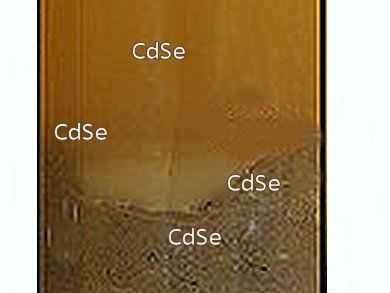Quantum dots (QDs) are semiconductor nanocrystals with diameters of about 2 to 100 nm. Though quantum dots are not yet commonly used in consumer products, scientists are exploring the particles’ applications in technologies ranging from solar panels to biomedical imaging.
Diana Aga and colleagues, University at Buffalo, NY, USA, evaluated the relative leaching potential and degradation of water-dispersible CdSe and CdSe/ZnS (protective shell) QDs using small-scale soil columns. The potential of QDs to release toxic Cd2+ and/or Se2-/SeO32- ions upon degradation is of environmental concern and warrants investigation.
Both classes of QDs exhibited limited soil mobility in CaCl2, with more than 70 % of the total Cd and Se species from QDs retained in the top soil after passing 10 column volumes of solution through the soil column. Though the shelled quantum dots are known in scientific literature to be more stable, both varieties were found to leak toxic elements within 15 days of entering soil.
Under normal circumstances, quantum dots rest in top soil and are unlikely to reach underground water tables, unless chelating agents such as EDTA (ethylene diamine tetraacetate) are introduced on purpose, or naturally-occurring organic acids such as plant exudates are present.
To prevent degradation in the future, Aga suggests to modify the surface of the nanomaterials.
- Differences in Soil Mobility and Degradability between Water-Dispersible CdSe and CdSe/ZnS Quantum Dots,
Divina A. Navarro, Sarbajit Banerjee, David F. Watson, Diana S. Aga
Environm. Sci. Technol. 2011.
DOI: 10.1021/es201010f




